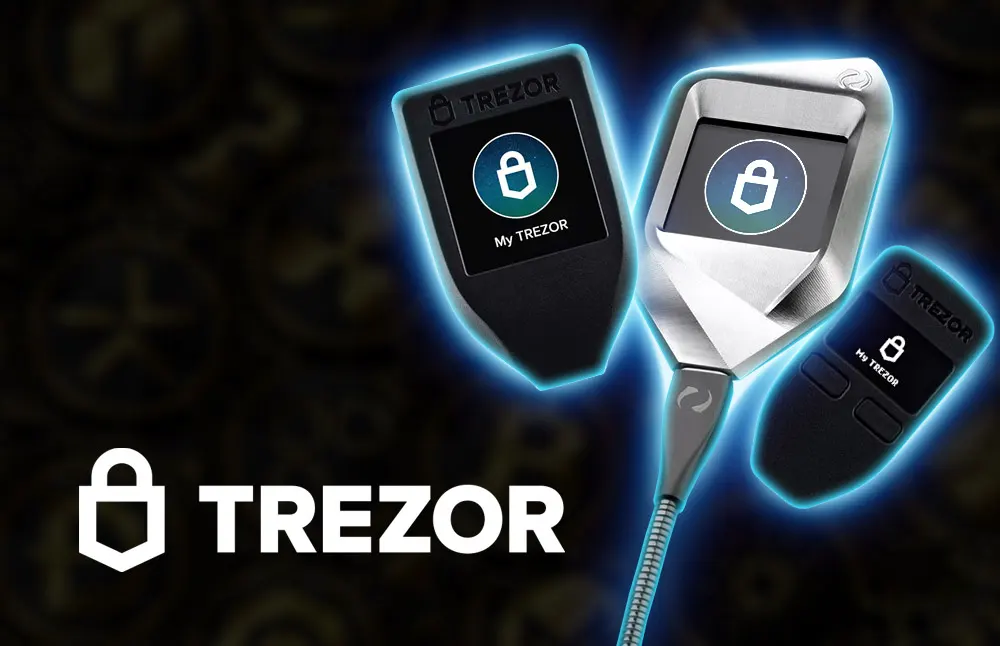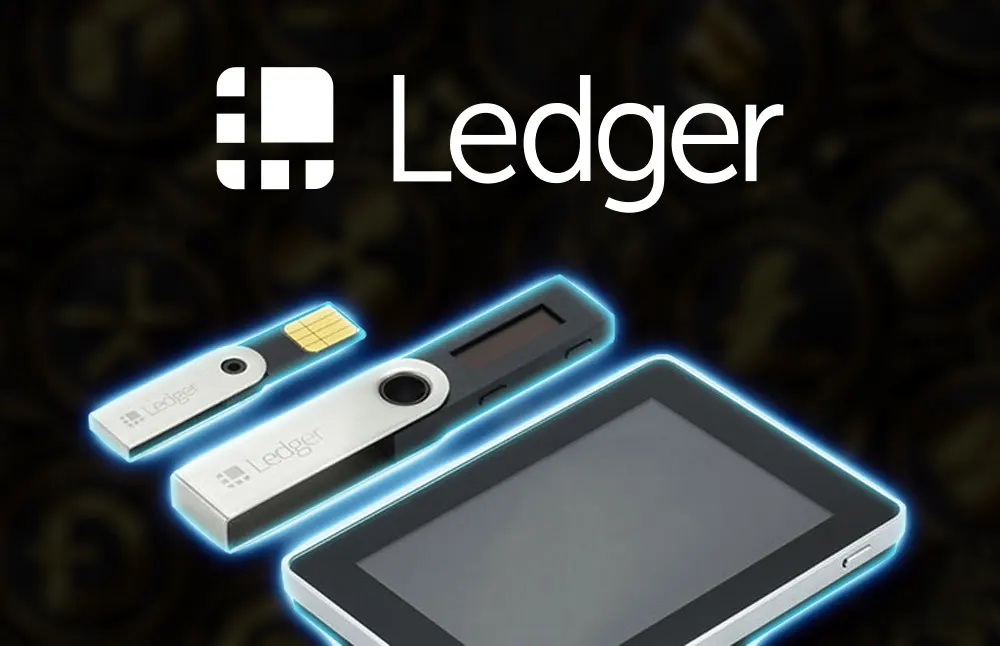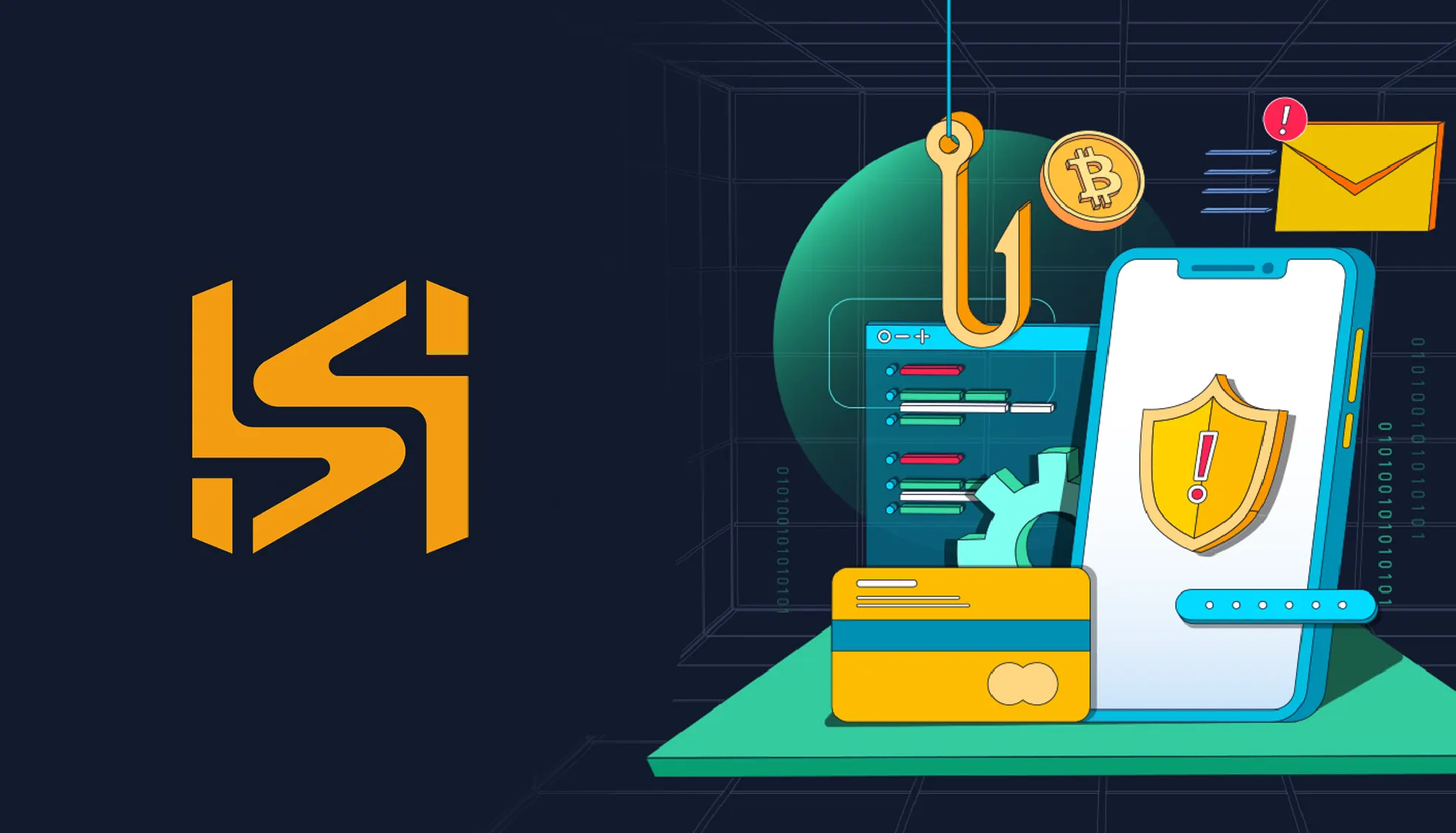How to Safeguard Your Cryptocurrency Investments: A Complete Guide | Everyone must safeguard their investment in this fast-moving, changing world of cryptocurrencies. Since digital currencies increasingly become popular and of value, they have made themselves a target for hackers and other cybercriminals. That means whether you are an experienced or new investor in crypto coins, it is vital to understand the best practices in protecting what’s yours. It is a complete manual of strategies and mechanisms that take one through crucial approaches to help protect them from thefts, frauds, or loss and hence keep them safe from harm’s way.
Why Security Matters in Crypto?
Over the last years, the value of cryptocurrency has been so high as to attract interest from all kinds of investors, enthusiasts in technology, and every other person. The possibility of high returns, coupled with the very concept of a decentralized financial system, is a very exciting frontier for modern investment portfolios. The risks related to the security of these new frontier opportunities are very significant. Here’s why keeping your crypto safe is so important.
- The Nature of Cryptocurrencies
By design, cryptocurrencies offer a form of currency that is decentralized and has no central governing authority. Their strength is in being decentralized, and yet, they’re vulnerable. Unlike traditional banking systems, wherein transactions can be reversed in case of fraud, crypto transactions are irreversible. Once confirmed on the blockchain, a transaction is final. This makes security of the wallet and private keys paramount, since without them you can’t access your funds; this may cost you the loss of all your funds.
- Prevalence of Cyber Attacks
Of late, the cryptocurrency space has become hackers’ heaven because of the high value coupled with often insufficient security measures taken by investors. Important cases of exchange hacks, phishing attacks, and malware infections have resulted in millions of dollars stolen. For example, the infamous Mt. Gox hack in 2014 saw more than $450 million worth of Bitcoin stolen, which calls for robust security practices.
- Phishing and Social Engineering
Probably one of the most common threats to cryptocurrency is the phishing attack. Most of the attacks are derived from fake websites or emails that will dupe the user into giving out their private keys or login information. Social engineering is also very common, wherein attackers are manipulating people to give out confidential information. Education of such strategies and being vigilant on online activities are also important for security maintenance.
- Regulatory and Legal Implications
While the decentralized nature of cryptocurrencies relieves one from conventional banking constraints, it places investors outside the protection that could be provided by regulatory bodies. It is much more difficult to recover lost funds in cases of theft or fraud than it would be through traditional financial systems. This legal grey area further underscores the requirement for personal security measures to protect your cryptocurrency investments.
- The Role of Secure Storage
The wallet chosen can make a huge difference in the security of cryptocurrency holdings. There are several Hot and Cold wallets there to use for holding your crypto assets. Hardware wallets, such as Ledger and Trezor, that are kind of cold wallets, keep storage offline. This is clearly one of the safest ways to store crypto assets. On the other hand, it exposes them to potential hacks by keeping large quantities of cryptocurrency on exchanges. Diversifying storage solutions with secure and reputable wallets can minimize these risks.
- Continuous Evolution of Threats
The strategies employed by cybercriminals are constantly changing just like the growing market of cryptocurrencies. What has been rapidly changing is malware, new techniques of hacking, and the threats that suddenly emerge call for continued vigilance and adaptation. Keeping up to date with the most recent practices on security and being updated on security from wallet providers, exchanges, and cybersecurity professionals is the key to securing your investment.
- Trust in the Ecosystem
The security level that characterizes the cryptocurrency ecosystem largely relies on how individuals and institutions treat their security practices. High-profile breaches and thefts dent market sentiments and have repercussions on prices and investor confidence. This is not only about the assets being kept safe, but more fundamentally, about stability and reliability for the crypto ecosystem.
Using Hardware Wallets for Enhanced Security
Generally speaking, using a hardware wallet is regarded as one of the safest methods to secure one’s cryptocurrency. This entails keeping your private keys offline with physical devices such as the Ledger Nano S, Ledger Nano X, and Trezor—the so-called “cold storage.” By doing it offline, that means your private keys are far from online threats, thereby drastically reducing the risks of hacking and malware attacks. Hardware wallets provide strong protection against cyber threats, which have become very common against digital assets, simply by keeping the private keys away from web-connected devices.
Hardware wallets inbuilt various layers of security features to protect your investments. One of the primary safety mechanisms involved is that every transaction needs to be physically confirmed. You are required to physically press a button on the device to start the process for transferring any funds. This step ensures that, even if someone has access to your computer or online account, they will not be able to execute any transactions without the physical hardware wallet. Furthermore, such devices usually have a PIN code protection in place, thus making another layer of security against unwanted access. If you misplace your hardware wallet or it gets stolen, then the recovery seed phrases will enable you to restore the wallet and access the funds.
On top of the apparent security benefits, hardware wallets are easy to use and suitable for both established investors and new market entrants. Most hardware wallets will have a very straightforward setup process that companion software will walk one through, as well as an intuitive interface for managing multiple cryptocurrencies. This makes them very user-friendly and ensures their position as one of the most important tools for protecting cryptocurrency investments.
Tezor Wallet

Trezor has been synonymous with security when one deals with cryptocurrency investments. It offers varieties of hardware wallets designed to protect digital wealth effectively. It is one of the oldest companies dealing with hardware wallets and has built a reputation of being a trustworthy solution to store cryptocurrencies safely. The understanding of how Trezor works and the benefits it offers will lead you through making a decision regarding the safeguarding of your investments. Here are some features of Tezor:
- High-Level Security: Trezor keeps the private keys offline, and transactions must be physically confirmed. That means there is little to no chance of hackers accessing your funds from a remote location.
- User-Friendly Interface: On the other hand, Trezor has been developed to be at everybody’s service, regardless of their experience in this area. The setup process is easy, while the companion software will create an intuitive interface when it comes to managing your digital currencies.
- Wide Compatibility: Trezor supports a large variety of different cryptocurrencies, so it could turn out to be an all-rounder for any kind of investor who holds a diversified portfolio. This device is nicely integrated with a lot of popular digital wallets and exchanges that will add flexibility when managing your assets.
- Backup and Recovery: Trezor has very strong backup and recovery methods in place. During configuration, you are given a recovery seed phrase that allows one to restore their wallet and recover their funds in the event of loss or destruction. You will always be able to recover your assets, even if a disaster occurs.
Ledger Wallets

Definitely, one of the most sought-after and popular trusted hardware wallets available today is the wallets from Ledger, offering a high level of security for cryptocurrency investors. Known for their strong features and user-friendly design, the wallets from Ledger—like the Ledger Nano S and Ledger Nano X—let one store digital assets safely offline. Knowing how Ledger wallets work and the benefits they have will help you be informed while securing your cryptocurrency investments. Here are some of the key features that make Ledger wallets a preferred choice for cryptocurrency enthusiasts:
- State-of-the-Art Security
- Secure Element (SE) Chips: Much like passports and credit cards, Ledger wallets use Secure Element chips to store your private keys, protecting them against not one, not two, but several types of cyber-attacks.
- BOLOS Operating System: The Ledger proprietary operating system, BOLOS, is itself hosted on the Secure Element, running each application independently of the others to reinforce security.
- Physical Confirmation: Transactions are physically checked on the device; hence it is impossible for a remote attacker to access funds.
- Wide Support for Cryptocurrencies
More than 1,800 different cryptocurrencies and tokens are supported by Ledger wallets. They include some of the popular ones, such as Bitcoin, Ethereum, Litecoin, or many ERC-20 tokens. In this regard, wide reach in compatibility makes Ledger versatile when managing diversified crypto portfolios.
- Easy to Use Interface
- Ledger Live App: The Ledger Live app is available on both desktop and mobile, with an easy-to-use interface for managing your cryptocurrencies. Send, receive crypto, see your balance, and track portfolio performance easily from one place.
- Easy Setup: Setup of a Ledger wallet is quite easy, and step-by-step guides are provided in the Ledger Live application. This means new people in cryptocurrency could be safe while handling their assets.
- Better Connectivity Options
- Ledger Nano S: It connects via USB to provide an easier and more secure way to manage one’s cryptocurrency from a computer.
- Ledger Nano X: In addition to USB, the device has Bluetooth connectivity, thus allowing management of cryptocurrency on-the-go using a smartphone. The Nano X’s larger screen also makes navigation and confirmation of transactions much more convenient.
- Backup and Recovery Options
- Recovery Seed Phrase: As part of the setup process, Ledger Wallets create a recovery seed phrase of 24 words. This is quite critical in recovering your wallet to regain access to your funds in case your device is stolen, lost, or destroyed. Thus, this seed phrase should be kept very safely.
- Management of Backups: Ledger wallets offer multiple backups that help back up their recovery seed phrase safely in various places.
- Open-Source and Community Support
- Open-Source Software: It’s open-source software, and the code can be reviewed, audited, and tampered with for security by the community. This transparency makes people trust the application.
- Active Community/Support: Moreover, Ledger has an active community of users and developers. This is a community that keeps contributing to enhancements in the platform continually. Ledger also provides active customer support with guides, FAQs, and direct assistance on troubleshooting.
- Firmware Updates
Ledger is very proactive when it comes to releasing firmware updates, as its main goals include the enhancement of security in a device and support of more digital currencies. Users would be informed through the Ledger Live app in case of any such updates, thereby running with the latest protection on devices.
Two-Factor Authentication: A Must-Have
In view of digital security, 2FA stands as a highly significant step towards the protection of your online and, more importantly, cryptocurrency accounts. 2FA secures an account with more than just a password. It wants that second form of verification, which could relate to something you know, have, or are. With 2FA, you’ve dramatically reduced the possibility of someone getting into your account because now it would take both your password and a second factor to break into your account.
The most common form of 2FA in the cryptocurrency world involves the use of a smartphone app like Google Authenticator or Authy. By enabling 2FA, an app will generate a time-bound code that will be required alongside your password when logging in. Usually, these codes change every 30 seconds, and hence, in case your code is intercepted, it will be highly impossible for hackers to use it since it will have expired. Some services provide SMS-based 2FA; with this method, the code is sent to a phone number as a text message. While this is not as safe as app-based 2FA because of SIM swapping attacks, it still provides a significant improvement over just relying on a password alone.
The importance of 2FA cannot be overstated when it comes to cryptocurrency exchanges and wallets. Every deal in cryptocurrency is irreducible, so once someone has accessed your account and transferred your funds, the chances of getting them back are nil. 2FA puts up an important barrier that should stop most transactions in the event that your password is compromised. It becomes all the more important considering that crypto users become easy targets in phishing attacks, whereby an attacker could make people give away their login credentials. If 2FA is turned on, then merely knowing the password will not help in accessing the account.
This makes brute force attacks, where every possible password combination is tried in an attempt to gain access, void. Even if they get lucky and guess your password, they will be blocked because of the second authentication factor. Given that this is an extra layer of security, it is important for securing your accounts, and this becomes paramount when that valuable asset happens to be cryptocurrency.
Most of the time, turning on 2FA is quite easy. This functionality is provided by most cryptocurrency exchanges and wallets, with pretty obvious instructions for setting it up. At this point, after you have enabled 2FA, you will have to secure the second factor device; quite often, this is just your smartphone. This can be quite a problem if you misplace your access to the 2FA device; hence, it is good to have backed up the recovery codes given during the setup process. These backup codes let you back into your account in case you ever misplace or otherwise lose access to your 2FA device.
Avoiding Phishing Scams
Phishing is among the greatest threats that exist within the world of cryptocurrency today. It is the attack aimed at trying to trick a user into giving private keys, passwords, and indeed any other form of access away. This can without a doubt expose one to huge losses, since in most cases, such cryptocurrencies cannot be recovered. Here are the ways to help prevent phishing from affecting your digital assets:

- Be Wary of Suspicious Emails and Messages
Most of the phishing attacks start with an email, message, or post from social media that seems authentic. This is how you can deal with these attacks.
- Check the sender: Check the e-mail address or username. Phishers may use addresses that look similar to, but not exactly like, those of valid ones.
- Watch out for red flags: Some common and obvious ones are unsolicited messages wanting to engender a sense of urgency, asking for personal information, or containing suspicious links.
- Avoid links: Never use links provided in the message; instead, always go directly to the website by typing it in your browser. This will ensure that you are going to the actual site and that you are not being redirected to any fraudulent site.
- Use Two-Factor Authentication (2FA)
Enable 2FA on your cryptocurrency exchange accounts and wallets. This adds another layer of security where it’s no longer just your password that’s required but also a second form of verification, like a code sent to your phone.
- Prefer Authenticator Apps: Use apps like Google Authenticator or Authy instead of SMS-based 2FA, which is more vulnerable to SIM swapping attacks.
- Verify Websites and URLs
Phishers often create replica websites, identical to the original site. That is why always check the URL before providing sensitive information.
- Check the URL: Make sure it starts with “https://” and contains the correct domain name. Note the typos, excess characters.
- Use Bookmarks: Save your cryptocurrency exchanges and wallets in the URLs of your browser bookmarks to avoid their mistyping.
- Keeping Software Up to Date
Keep your operating system, browser, and any cryptocurrency-related software up to date. Updates generally include security patches against the latest threats.
- Enable Automatic Updates: This makes sure that you have the latest security improvements; you won’t need to remember checking for updates manually.
- Educate Yourself and Stay Informed
Phishing tactics change all the time. It is, hence, important to remain abreast with the latest threats and how you can protect yourself against them.
- Keep Update with Legitimate Sources: Keep updating yourself with news from cryptocurrency blogs, forums, and official channels of your exchanges and wallets.
- Be a Part of the Community: Stay updated with others’ experiences and best practices in the cryptocurrency community.
- Use Security Tools
Utilize complementary security tools to further protect yourself from a phishing attack.
- Anti-Phishing Extensions: Download and add anti-phishing extensions like PhishTank or HTTPS Everywhere to your browser. These can be of great help in identifying and disabling phishing websites.
- Password Managers: One should maintain unique strong passwords for all their accounts, and these could be generated and stored with a password manager. Most password managers also alert users about phishing attempts.
- Scrutinize Information Requests
Verify any request that asks for sensitive information, even if it appears to be from a trusted source.
- Contact Support Directly: If you get an unusual request from an exchange or wallet service provider, contact their support team directly using contact information only from their official website.
- Never Share Private Keys: No legitimate service will ever ask for your private keys. If someone wants them, it is a scam.
- Secure Your Devices
Be certain that you have security measures in place on the devices used for cryptocurrency transactions.
- Antivirus Software: Downloading and updating antivirus software at regular intervals will protect against malware, etc.
- Secure Your Network: A safe, private Wi-Fi network shall be used, and no transactions should be done over public Wi-Fi.
Not falling for a phishing scam involves vigilance and proactive measures in the fight. Keeping yourself informed, verifying sources, and using security tools can help to reduce your risk of becoming one of the victims significantly. Recall that most of your cryptocurrency assets’ safety lies in your hands. You will, therefore, take these steps that help in protecting your cryptocurrency investments.
Keeping Your Private Keys Safe
Private keys are the most essential factor in the security of your cryptocurrency. They provide full access to funds and allow the signing of transactions. Once someone gets access to your private keys, they could be in control of the assets. Here are a few strategies to keep your private keys safe:
- Hardware Wallets
Hardware wallets are physical devices that enable the secure storage of private keys offline as we explained before.
- Offline Storage: Since private keys are stored off the internet, online hacking cannot damage them.
- Physical Confirmation: Each transaction is physically confirmed on the device, therefore even more secure.
- Backup and Recovery: While setting up, these wallets generate a recovery seed that will help you restore your keys if you happen to misplace your device or have it damaged. It’s vital to keep this seed very safe.
- Keep them in Cold Storage
This is entirely keeping your private keys offline. The options are:
- Paper Wallets: This is a document containing all your private keys and public addresses. Generate them using a trusted, offline generator and store them in a safe or safety deposit box.
- Air-Gapped Computers: Generate and store your private keys in a computer that has never had an Internet connection. Very secure but requires careful management.
- Encrypt and Backup Your Keys
Encrypting your private keys protects them in case they ever get stolen or someone else accesses them.
- Encryption Software: Protect the digital copies of your private keys using trusted encryption software.
- Multiple Backups: Place encrypted backups into several secure locations, for example, onto external hard drives or USB sticks kept in various physical locations.
- Secure Your Devices
Ensure security in the devices that access your cryptocurrency wallets.
- Antivirus and Anti-Malware: Install antivirus and anti-malware software on your device, update it regularly, and run scans consistently.
- Secure Browsing: Use secure, updated browsers, and consider using complementary add-ons that enhance browser security.
- Avoid Public Wi-Fi: Never log in to your wallets via a public Wi-Fi network, which can be insecure and is prone to attacks.
- Use Multi-Signature Wallets
Multi-sig wallets are designed in such a way that a transaction in it gets authorized only after multiple private keys provide their signatures.
- Higher Security: By demanding multiple signatures, multi-sig wallets decrease the possibility that one key being compromised will result in a loss of funds.
- Distributed Responsibility: Under multi-sig wallets, keys can be distributed among trusted people for better safety.
- Educate Yourself and Stay Vigilant
Remaining alert is half the battle. Stay current with best practices and threats.
- Phishing Awareness: Be on the lookout for phishing. Do not give away your private keys, and make sure you check the URL and who the emails are from.
- Regular Audits: Go over your security practice regularly to enable betterment and updates as needed.
- Store Keys in Secure Physical Locations
The importance of physical security is on the same level as that of digital security.
- Safe Deposit Boxes: Paper wallets and backup drives belong in safe deposit boxes.
- Home Safes: Store physical copies of your keys and backup devices in a high-quality, fireproof safe at home.
- Be Careful with Mobile Wallets
The convenience of mobile wallets comes at the cost of security: they are not as protected as hardware or cold storage wallets.
- Mobile Device Safety: Keep your mobile device safe, running on the latest security patches, using encryption.
- Trusted Apps: Only use wallet apps that have good reviews and generally come from trusted sources. Do not keep large cryptocurrency balances in mobile wallets.
Keeping private keys safe is the most critical part of securing cryptocurrency assets. Hardware wallets and cold storage, along with encryption and multi-signature wallets, make the risk of losing access to funds nearly nonexistent when combined with good device and personal security practices. Remember that, to great degree, you are your own bank in cryptocurrency, and these steps will go a long way toward securing your financial future.
Best Practices for Secure Transactions
What will make transactions secure in cryptocurrency requires a combination of vigilance, technology, and best practice. Provided that the following guidelines are observed, it largely averts unauthorized access and fraudulent activities.
- Reputable Exchanges and Wallets
- Choice of a Trusted Platform: Only deal with known and reputable cryptocurrency exchanges and wallets. Search for reviews and security histories from platforms.
- Check URLs: Note the URL of every site you visit and make sure that you are on the right one. Bookmarking important sites avoids fakes.
- Enable Two-Factor Authentication (2FA)
- Enable 2FA: On all of your cryptocurrency accounts, turn on two-factor authentication. This involves having a second form of verification, such as a code sent to your phone.
- Use Authenticator Apps: Prefer authenticator apps such as Google Authenticator or Authy over SMS-based 2FA to prevent SIM swapping attacks.
- Verify Details of Transactions
- Triple-Check Addresses: Always triple-check the receiver’s address before transferring any cryptocurrency. A copy-paste error or malware might edit the address.
- Use QR Codes: Use QR codes, if at all possible, to minimize manual entry of addresses.
- Keep Updating Software
- Keep Software Up-to-Date: Keep updating your wallet software, the operating system, and all other associated applications from time to time to be safe from security vulnerabilities.
- Automatic Update: Wherever possible, turn on the automatic update facility to be on the safe side with regard to receiving security patches.
- Use Multi-Signature Wallets
- Multi-Sig Wallets: Use multi-signature wallets that require a number of different private keys to approve a transaction. It increases the security by distributing control among two or more parties.
- Use Secure Networks
- Avoid Public Wi-Fi: Never make any kind of cryptocurrency transaction over public Wi-Fi. Use a secure and private internet connection.
- VPNs: When traveling, consider the use of a Virtual Private Network (VPN) to add an extra layer of security, especially when accessing your cryptocurrency accounts.
- Monitor Your Accounts
- Regular Checks: Keep an eye on your accounts for any unauthorized transactions, and respond as swiftly as possible to minimize losses if you happen to find some.
- Alerts: If it’s possible on your wallet or exchange, turn on the transaction alert setting. This kind of alert will notify you when something suspicious is taking place, enabling you to act at the fastest speed possible.
- Keep Learning continuous
- Staying Informed About New Security Threats: Always be updated on the current threats and best security practices relating to cryptocurrency.
- Community Engagement: Stay in cryptocurrency communities and forums to update yourself regarding the experience of other users and to know the new threats.
- Care towards Mobile Devices
- Protect Mobile Devices: All of your mobile devices should be protected by robust passwords, encryption techniques, and security patches which should always be updated.
- Keep Away from Large Mobile Transactions: Never make large transactions using your mobile devices. Instead, apply more reliable devices like hardware wallets for such transactions.
- Powerful Passwords
- Unique Passwords: Use unique and strong passwords for all your crypto accounts. Never share the same password across different platforms.
- Password Managers: You must have a password manager to generate complex passwords and keep them safely.
The Bottom Line
The absolute care of cryptocurrency investments can only be taken through an integrated security configuration featuring technical tools and practices that shall help one exercise vigilance. These would include steps like digital file backups in offline hardware wallets, turning on 2FA, and software updating from time to time in order to not allow possible cases of illegal entrance and stealing. These measures will reduce the possibilities that unauthorized access might be granted and increase protection measures for transactions involving one’s private keys. Keep in mind that cryptocurrency security is fast-moving, and one must continuously update their knowledge regarding emerging threats and best practices.
Ultimately, your cryptocurrency investments are such valuable assets that need robust protection. Following the tips in this guide—be it checking the legitimacy of the platforms, using multi-signature wallets, or ensuring safe backup procedures—you provide a robust protection against most threats. As you move further into this digital realm of assets, it’s constant care for safety that will sustain your investments with peace of mind, letting you grow and manage your cryptocurrency portfolio with confidence. For trade and swap cryptocurrencies, Flashift.app has implemented a safe and easy-to-use platform. Once you use it, you would realize its difference.
Read more about swap cryptocurrencies across blockchains
FAQs
- What are some common threats to cryptocurrency security?
The general threats include hacking, phishing, malware, and social engineering attacks. They can cause your private keys and other personal information to be inadvertently revealed, leading to a loss in digital assets.
- Protecting My Cryptocurrency Investments from Security Threats: How?
Protect your investments using trusted wallets and exchanges, two-factor authentication, keeping the private key safe in a hardware wallet, updating software, and taking care against phishing attempts and suspicious communications.
- What Is a Hardware Wallet and Why Should I Get One?
A hardware wallet is an offline physical device that securely stores your private keys. Since it is not connected to the internet, it’s way more secure to store one’s keys away from online threats, such as hacking and malware, and demands physical confirmation for transactions.
- What if I happen to lose my hardware wallet?
If you happen to misplace your hardware wallet, your funds can easily be recovered using the recovery seed phrase that was generated during setup. Keep the seed phrase safe and restore the wallet on a new hardware device or a compatible software wallet.
- Why is 2FA important for cryptocurrency accounts?
It makes your accounts much more secure. If someone knows or hacks your password, they would need the second form of verification; thus, with 2FA, there is a lesser chance of gaining unauthorized access and probably theft of your cryptocurrency assets.
- How do I know it’s a phishing attempt?
Watch out for red flags such as suspicious sender’s email IDs, urgent/threatening language, unexpected attachments or links, and those badly designed websites. Never give personal information until the authenticity of the source has been verified.
- What should I do if I think someone is phoning?
If you think it’s a phishing attempt, never click the link or any links, or input any information. Report the phishing to the respective platform or service and update your passwords and security settings.
- What is the proper way to store private keys?
Keep private keys with hardware wallets, store them in paper wallets, or use air-gapped computers; also, remember to back them up and keep them in a secure location with tight encryption. Never keep private keys on devices with access to the internet or in any type of digital storage.
- What if I accidentally exposed my private key?
If you’ve exposed your private key, move your funds to a new wallet with a new private key. Log in to the services concerned to protect your accounts and monitor for illegal transactions.
- How can I ensure I’m sending cryptocurrency correctly?
Check the recipient’s address before sending, QR scan when possible, and send a small test transaction if sending a large amount. Details of your transaction should always be verified on the hardware device or in-app before confirming the transaction.
- What happens if I realize I’ve made a mistake in a transaction?
However, if you realize that you have made a mistake in the transaction, there is usually no way to reverse it. You should instantly contact your wallet and exchange support for advice and be very vigilant with monitoring accounts for any unauthorized transactions.






